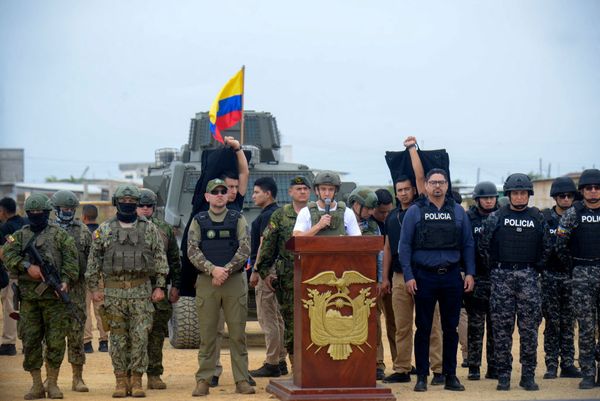On World Cancer Day, which is concurrent on Feb 4 annually, the WHO is calling for intensified action across the Southeast Asian region to strengthen health systems to prevent and detect cancers early, to provide prompt treatment referral, to enhance access to palliative care, and to close the gap in access to quality cancer services -- the theme of this year's commemoration.
Cancer is the second leading cause of death globally, accounting for an estimated 9.9 million deaths in 2020. Between 2010 and 2019, global cancer incidence increased by 26%, alongside a 21% increase in cancer deaths. An estimated one-third of cancer deaths globally are due to tobacco use, high body mass index, alcohol use, low fruit and vegetable intake, and lack of physical activity.
In the WHO Southeast Asia Region, an estimated 2.3 million people developed cancer in 2020, and 1.4 million died of the disease. Cancer is estimated to account for more than 20% of premature mortality from noncommunicable diseases (NCDs) in the region, which stands at around 4.7 million deaths every year. In 2020, cancer of the lungs, breast and cervix accounted for 400 000 of the total number of cancer-related deaths in the region, and almost two-thirds of people diagnosed with cancer succumbed to the disease, highlighting the urgent need for improved early diagnosis and treatment.
Since 2014, the region has accelerated action to prevent, detect, treat and control cancer, with an increased focus on eliminating cervical cancer as a public health problem. Eight countries of the region now have in place population-based cancer registries (PCBRs), and three countries -- Myanmar, Nepal and Sri Lanka -- are focus countries for addressing childhood cancer. Ten of the region's 11 member states provide tertiary care services for cancer diagnosis and treatment -- including surgical and chemotherapy services -- and nine also offer radiotherapy services.
WHO continues to support countries of the region to implement its new Regional Action Plan on Oral Health 2022–2030, including oral cancers, which in 2020 were among the top five most common cancers, accounting for 7.4% of new cancers. Five countries of the Region -- Bhutan, India, Myanmar, Sri Lanka and Thailand -- now have in place national cancer control plans, which Maldives and Nepal are in the process of finalising. The region is currently on track to achieve the WHO NCD Global Action Plan target of a 30% relative reduction in tobacco use prevalence between 2010 and 2025.
On cervical cancer, the region is achieving rapid, life-saving progress. Five member states -- Bhutan, Maldives, Myanmar, Sri Lanka and Thailand -- have introduced nationwide HPV vaccination, which Bangladesh, India and Timor-Leste are set to also introduce. Indonesia has introduced HPV vaccination in several provinces, covering tens of millions of girls. New evidence shows that a single dose of HPV vaccine delivers protection comparable to the 2-dose schedule, which alongside additional cost reductions, should enable countries to reach every woman and girl.
To accelerate progress and close the care gap, the region has several priorities. First, introducing and/or expanding HPV vaccination in routine immunisation to prevent cervical cancer, covering at least 90% of adolescent girls. At the same time, the region must continue to facilitate healthy lifestyles, including by not just legislating but enforcing key tobacco control measures such as health warnings and bans on tobacco advertising, promotion and sponsorship, as well as by raising taxes on tobacco products.
Second, increasing capacity at the primary health care (PHC) level to detect cancers early, with a focus on intensified health workforce training, improved infrastructure and resources, and streamlined referral pathways for prompt initiation of treatment. In all countries, PHC physicians and nurses must be equipped to provide palliative and end-of-life care close to patients' homes and families within the community.
Third, rapidly -- and systematically -- advancing the capacity of tertiary care facilities to provide comprehensive diagnostic and treatment services, which is critical to reducing cancer mortality. Interventions should be aimed at high-burden cancers with a high potential for cure. They must be accessible to all. Existing PBCRs should be improved, and where appropriate, new registries established, ensuring that policymakers can access good-quality information to plan, monitor and evaluate interventions and adjust accordingly.
Fourth, including cancer services in risk pooling or pre-payment schemes and health benefit packages. For this, national health budgets should enhance the quality and accessibility of public sector services and strengthen financial protection, with a focus on ending catastrophic health expenditures.
Action cannot and must not wait. In the last two decades, the world has made significant progress in the science of cancer control. However, much more work is needed to close the care gap, improve cancer survival, and accelerate towards the NCD 2025 and sustainable development goal targets for 2030. On World Cancer Day, the WHO reiterates its commitment to support all countries of the region to prevent, detect, treat and control cancer, ensuring equitable access to quality cancer services for everyone, everywhere.
Dr Poonam Khetrapal Singh is WHO Regional Director for South-East AsiaWHO's South-East Asia Region. The article marks World Cancer Day, Feb 4.







